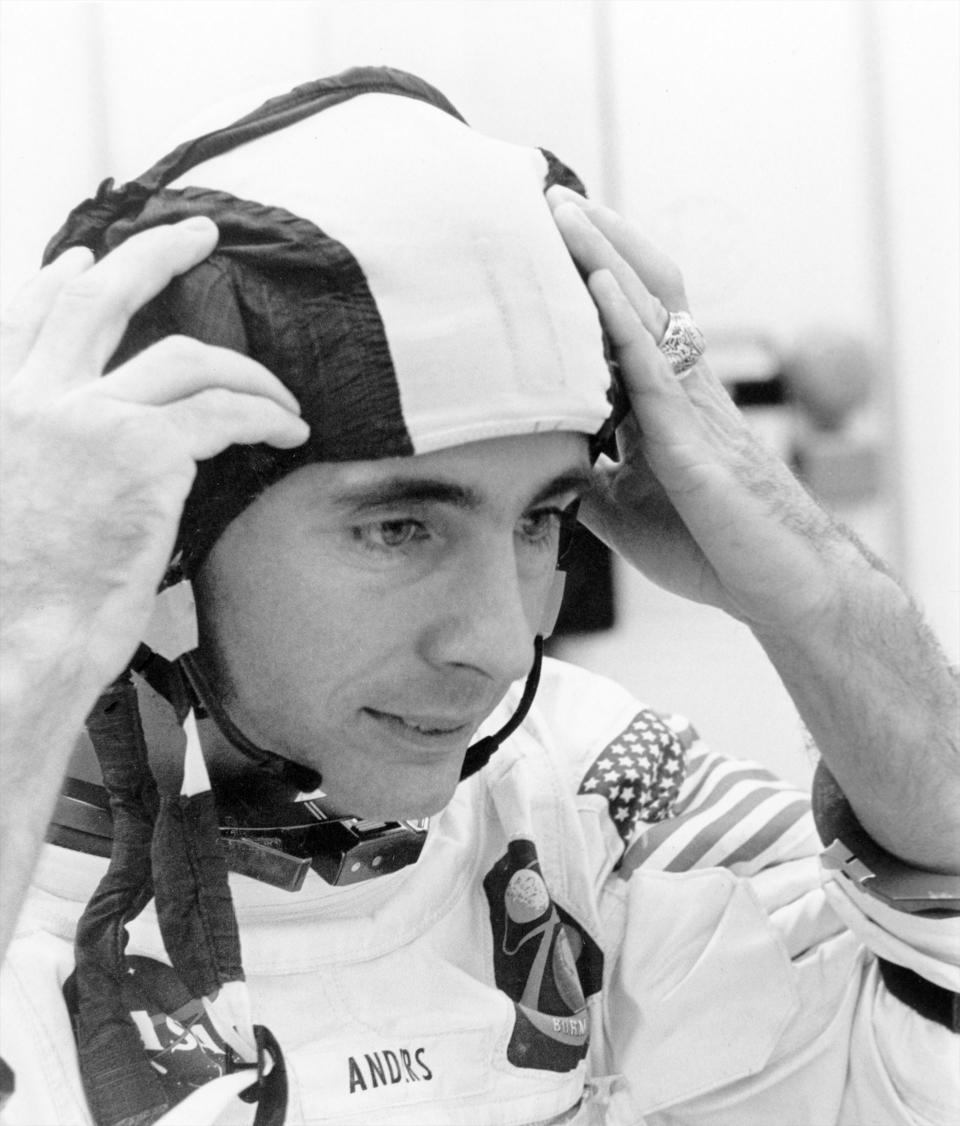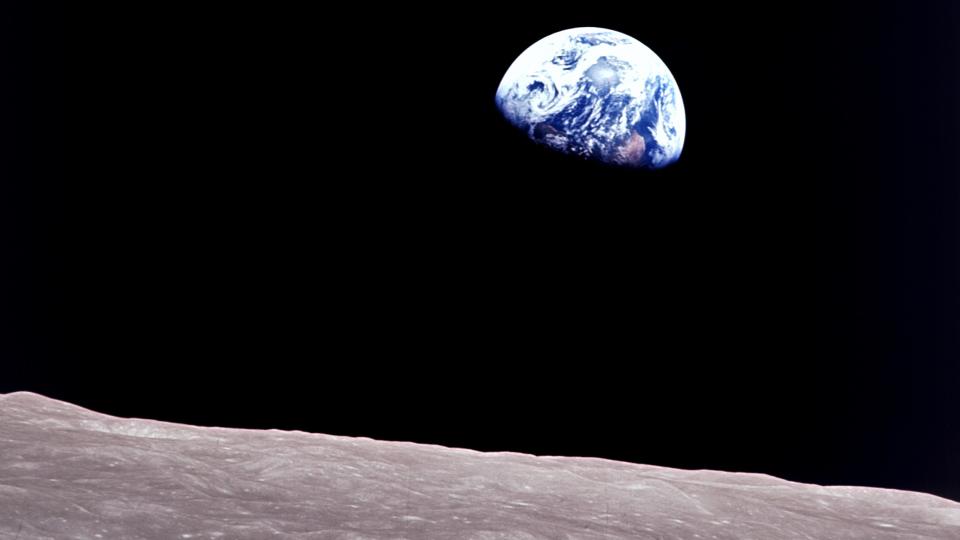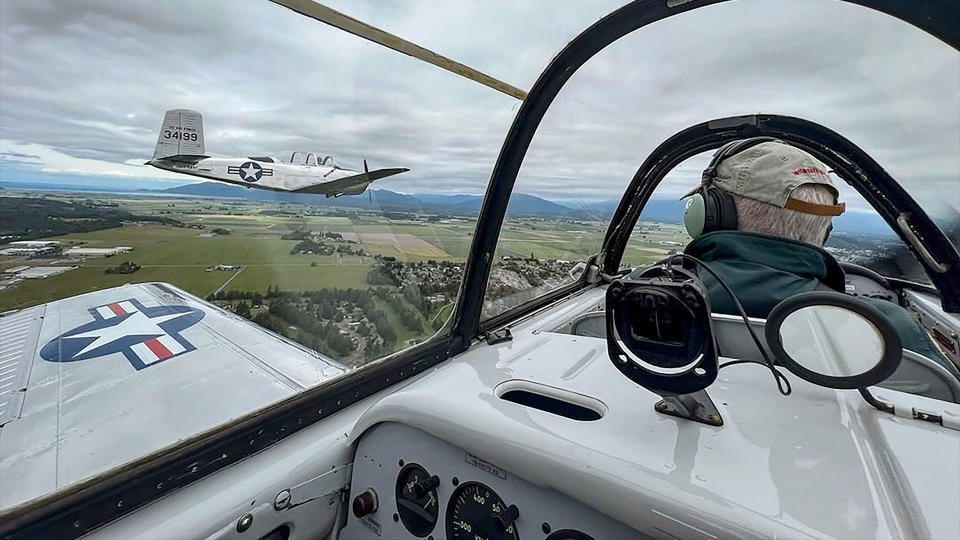Bill Anders, one of the first people to fly to the moon as an Apollo 8 astronaut in 1968, died on Friday, June 7, when the vintage plane he was piloting crashed off the coast of the San Juan Islands northwest of Washington. Situation.
In a statement to the media, it was confirmed by his son that Anders, 90, was the pilot of the Beechcraft T-34 Mentor single-engine plane that crashed.
“The family is devastated,” Greg Anders said. “He was a great pilot. He will be missed.”
“He went to the doorstep of the Moon and helped us all see something else: ourselves. He embodied the lessons and purpose of exploration. We will miss him,” NASA Administrator Bill Nelson said in a statement.
The plane crash occurred around 11:40 a.m. PDT (1840 GMT) off the coast of Jones Island in the San Juan Channel, near Orcas Island, where Anders lived. The plane was one of three such Air Force trainers owned and operated by Anders’ Heritage Flight Museum in Burlington, Washington.
Video of the accident taken by local residents shows Anders failing to stop at the bottom of a loop and crashing into the water.
Relating to: A Christmas Eve message from his photographer, 50 years after ‘Earthrise’

A member of NASA’s third group of astronauts selected in 1963, Anders’ only flight into space was as a lunar module pilot on the Apollo 8 crew. On December 21, 1968, Anders, along with mission commander Frank Borman and command module pilot James Lovell, became the first humans to launch NASA’s Saturn V rocket for a six-day mission to circumnavigate the moon.
Three days later, Anders and his crew entered lunar orbit, where they became the first to see our home planet emerge from beyond the lunar horizon. Anders’ now-iconic color “Earthrise” photograph has been credited with inspiring the environmental movement and was reproduced on a US postage stamp.
“The most impressive part of the flight is [when] We were in lunar orbit,” Bill Anders wrote in a NASA oral history in 1997. “We were going backwards, we were going upside down, we couldn’t actually see the Earth or the sun, and when we turned around, when we turned around, when we came back, we saw the Moon. first World Birth. Definitely the most impressive thing was seeing this very delicate, colorful sphere (to me it looked like a Christmas tree ornament) coming over this very plain, ugly moonscape.”
Anders was also one of the first people to see the far side of the moon in person.
Landing in the North Pacific Ocean, Anders logged a total of six days, three hours and 42 seconds in space; This includes completing 10 orbits of the moon in 20 hours.


William Alison “Bill” Anders was born on October 17, 1933, in Hong Kong, where his father was then serving in the U.S. Navy.
As a child, Anders moved with his family to Annapolis, Maryland, and then to China until the occupation of Japan in 1937. He and his mother fled to the Philippines and then reunited with his battle-wounded father in San Diego, California.
Anders graduated from the U.S. Naval Academy in Annapolis in 1955 with a Bachelor of Science degree in electrical engineering. He was later commissioned as a second lieutenant in the U.S. Air Force, where he received flight training in part in the T-34 Mentor. .
He earned his wings in 1956 and served as a fighter pilot with the 84th Fighter-Interceptor Squadron at Hamilton Air Force Base in California and the 57th Fighter-Interceptor Squadron in Iceland.
In 1962, Anders earned a Master of Science degree in nuclear engineering from the Air Force Institute of Technology at Wright-Patterson Air Force Base in Ohio. Anders then applied to both the US Air Force Aerospace Research Pilots School (ARPS) for test pilot training and NASA to become an astronaut.


Before flying on Apollo 8, Anders served with Neil Armstrong on the backup crew of Gemini 11. He was later assigned to the third Apollo mission, planned as the second test of a lunar module in Earth orbit. When development of the lunar lander took a long time, NASA suggested sending Anders and his crew around the moon instead; thus ensuring that the United States was ahead in the space race with the Soviet Union.
After returning from the Moon, Anders served as support for command module pilot Michael Collins on the Apollo 11 lunar landing mission.
Thinking that his chances of walking on the Moon were low, Anders left NASA in 1969 and became secretary general of the National Aeronautics and Space Council. In 1973, he was appointed to the five-member Atomic Energy Commission, where he led all nuclear and non-nuclear energy research and development. He was also named US head of the technology exchange program for nuclear fission and fusion power with the Soviet Union.
In 1975, Anders was elected the first chairman of the Nuclear Regulatory Commission. At the end of his term, he was appointed US Ambassador to Norway and remained in this position until 1977.
After briefly serving as a fellow of the American Enterprise Institute, Anders joined General Electric (GE) as vice president and general manager of its nuclear products division. In 1980, he became general manager of GE’s aircraft equipment division.
In 1984, Anders left GE and joined Textron, first as vice president of aerospace and then two years later as senior vice president of operations.
In 1988, Anders retired from the Air Force reserves with the rank of major general.
In 1990, Anders became vice president of General Dynamics, and in 1991 president and chief executive officer. He retired as CEO in 1993 and left the company in 1994.
Relating to: Apollo Program: How NASA sent astronauts to the moon


RELATED STORIES:
— Earth Day at 50: How Apollo 8’s ‘Earthrise’ photo sparked the first celebration
— Apollo 8: Everything you need to know
— Apollo 8 changed humanity’s view of the Earth forever
In retirement, Anders founded the William A. Anders Foundation, a philanthropic nonprofit organization dedicated to education and the environment, and the Heritage Flight Museum, where he and his family not only curated a collection of historic aircraft, vehicles, artifacts, and photographs. he also operated planes, flying them at air shows and other venues.
For his contributions to the space program, Anders was awarded the NASA Distinguished Service medal, the Collier Award, and the Michael Collins (formerly the National Air and Space Museum) Award, among other honors. He was inducted into the International Aerospace Hall of Fame in 1983, the International Aerospace Hall of Fame in 1990, the U.S. Astronaut Hall of Fame in 1997, and the National Aviation Hall of Fame in 2004.
In 2004, NASA named Anders an Ambassador of Exploration and gave him (in name only) a moon rock. Anders also has two craters named after him on the far side of the moon. The “Anders” crater is located southeast of the outer rim of the Apollo basin and “Anders’ Earthrise”, which is visible in the astronaut’s “Earthrise” photo.
Anders was portrayed by actor Robert John Burke in the Emmy-winning HBO miniseries “From the Earth to the Moon” and appeared as himself in the 2018 documentary “First to the Moon.”
Anders married Valerie Elizabeth Hoard in 1955 and together they had six children, Alan, Glen, Gayle, Gregory, Eric and Diana.
To follow collectSPACE.com Open Facebook and @ on TwittercollectSPACE. Copyright 2024 CollectSPACE.com. All rights reserved.